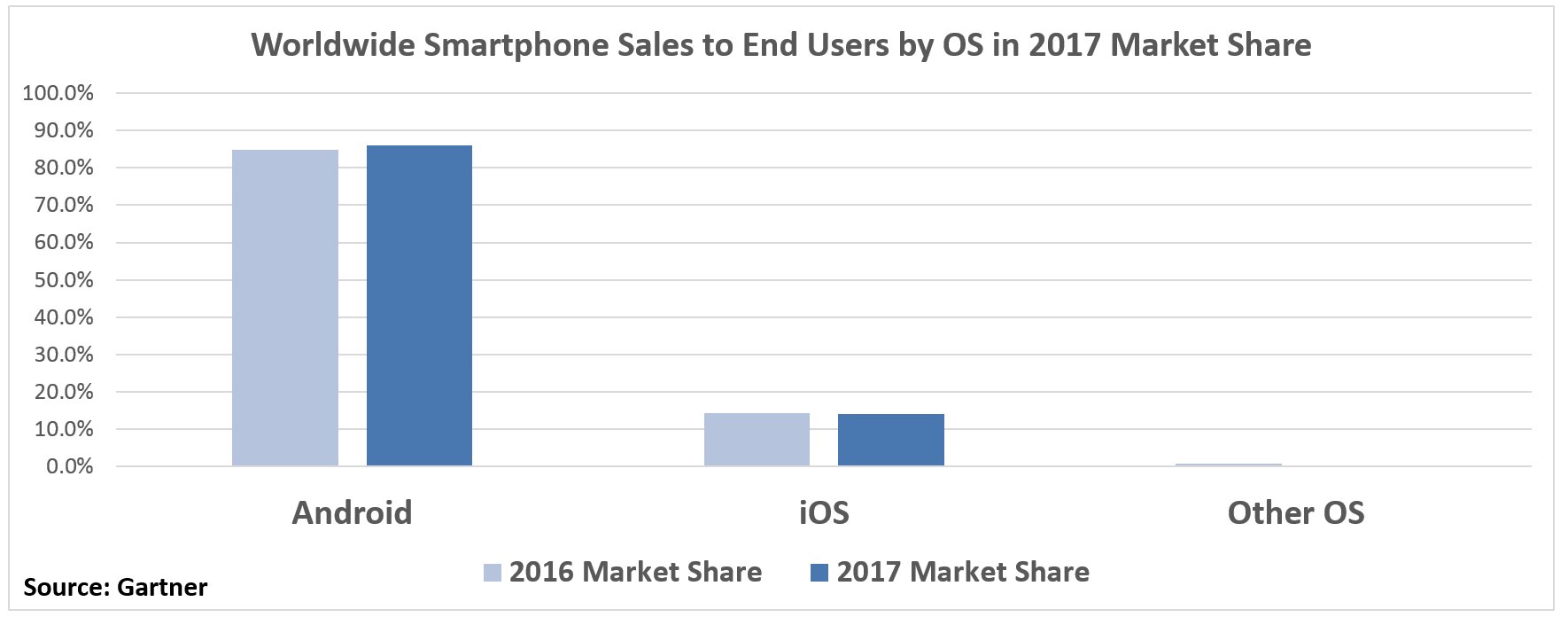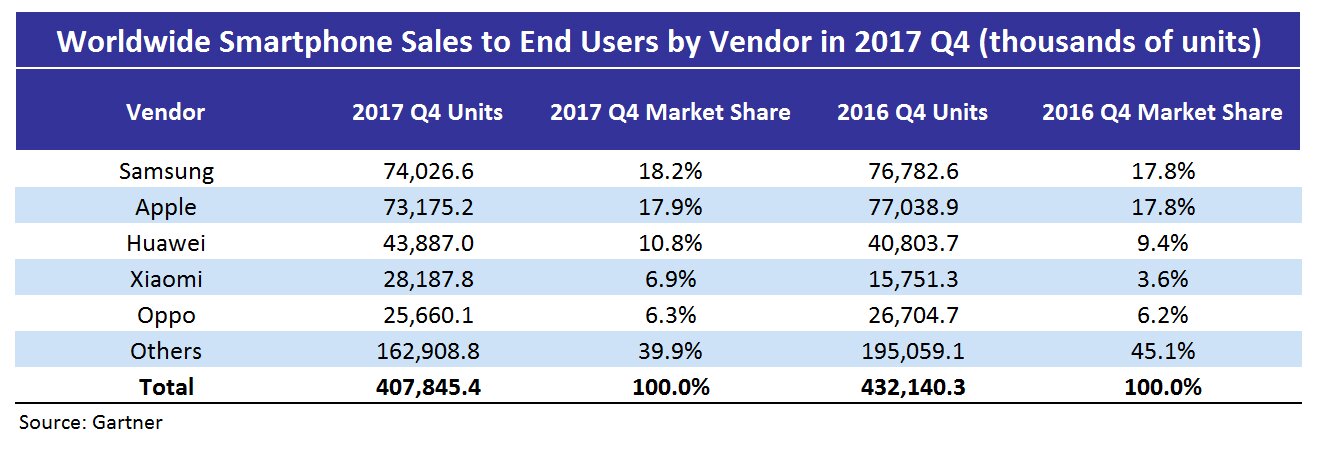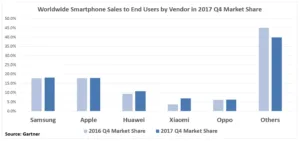Global sales of smartphones to end users totaled nearly 408 million units in the fourth quarter of 2017, a 5.6% decline over the fourth quarter of 2016, according to Gartner. This is the first year-on-year decline since Gartner started tracking the global smartphone market in 2004.
 In the smartphone operating system market, Google’s Android extended its lead by capturing 86% of the total market in 2017. This is up 1.1% from a year ago. Anshul Gupta, research director at Gartner, said:
In the smartphone operating system market, Google’s Android extended its lead by capturing 86% of the total market in 2017. This is up 1.1% from a year ago. Anshul Gupta, research director at Gartner, said:
“The competition in the smartphone market is unabated at this time of the year. Ahead of MWC, several phone manufacturers such as Samsung, HMD (Nokia), Asus and LG have announced that they will launch new Android smartphones”.


“Two main factors led to the fall in the fourth quarter of 2017. First, upgrades from feature phones to smartphones have slowed down due to a lack of quality ultra-low-cost smartphones and users preferring to buy quality feature phones. Second, replacement smartphone users are choosing quality models and keeping them longer, lengthening the replacement cycle of smartphones. Moreover, while demand for high quality, 4G connectivity and better camera features remained strong, high expectations and few incremental benefits during replacement weakened smartphone sales”.
Samsung saw a year-on-year unit decline of 3.6% in the fourth quarter of 2017, but this did not prevent it from defending its number-one global smartphone vendor position against Apple.

Despite the beginning of a sales slowdown of Samsung’s Galaxy S8 and S8+, the overall success of those models has helped the company improve its overall average selling price. Samsung is poised to announce the successors to its Galaxy series of smartphones at Mobile World Congress this year. The launches of its next flagship devices are likely to boost Samsung’s smartphone sales in the first quarter of 2018. Although Samsung’s significant sales volumes lean toward mid-price and entry-level models, which now face extreme competition and reducing contribution, its profit and average selling price may further improve if these next flagship smartphones are successful.
While Apple’s market share stabilised in the fourth quarter of 2017 compared to the same quarter in 2016, iPhone sales fell 5%. Gupta continued:
“Apple was in a different position this quarter than it was 12 months before. It had three new smartphones—the iPhone 8, iPhone 8 Plus and iPhone X—yet its performance in the quarter was overshadowed by two factors. First, the later availability of the iPhone X led to slow upgrades to iPhone 8 and 8 Plus, as users waited to try the more expensive model. Second, component shortages and manufacturing capacity constraints preceded a long delivery cycle for the iPhone X, which returned to normal by early December 2017. We expect good demand for the iPhone X to likely bring a delayed sales boost for Apple in the first quarter of 2018”.
Huawei and Xiaomi were the only smartphone vendors to achieve year-on-year unit growth (7.6 and 79%, respectively) and grew market share in the quarter. With Huawei’s new smartphone additions in the quarter, including Mate 10 Lite, Honor 6C Pro and Enjoy 7S, the vendor broadened the appeal of its smartphones.
Xiaomi’s competitive smartphone portfolio, consisting of its Mi and Redmi models, helped accelerate its growth in the emerging Asia Pacific (APAC) market. It also helped Xiaomi win back lost share in China. Gupta also commented:
“Future growth opportunities for Huawei will reside in winning market share in emerging APAC and the US. Xiaomi’s biggest market outside China is India, where it will continue to see high growth. Increasing sales in Indonesia and other markets in emerging APAC will position Xiaomi as a strong global brand”.
In 2017 as a whole, smartphone sales to end users totaled over 1.5 billion units, an increase of 2.7% from 2016. Huawei, ranking third, raised its share in 2017, continuing to gain on Apple. At the same time, the combined market share of the Chinese vendors in the top five increased by 4.2%, while the market share of the top two, Samsung and Apple, remained unchanged.



